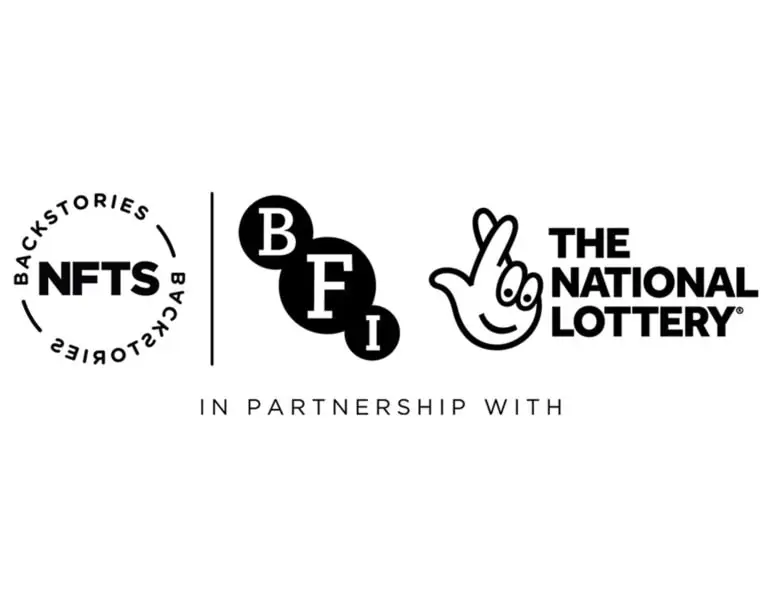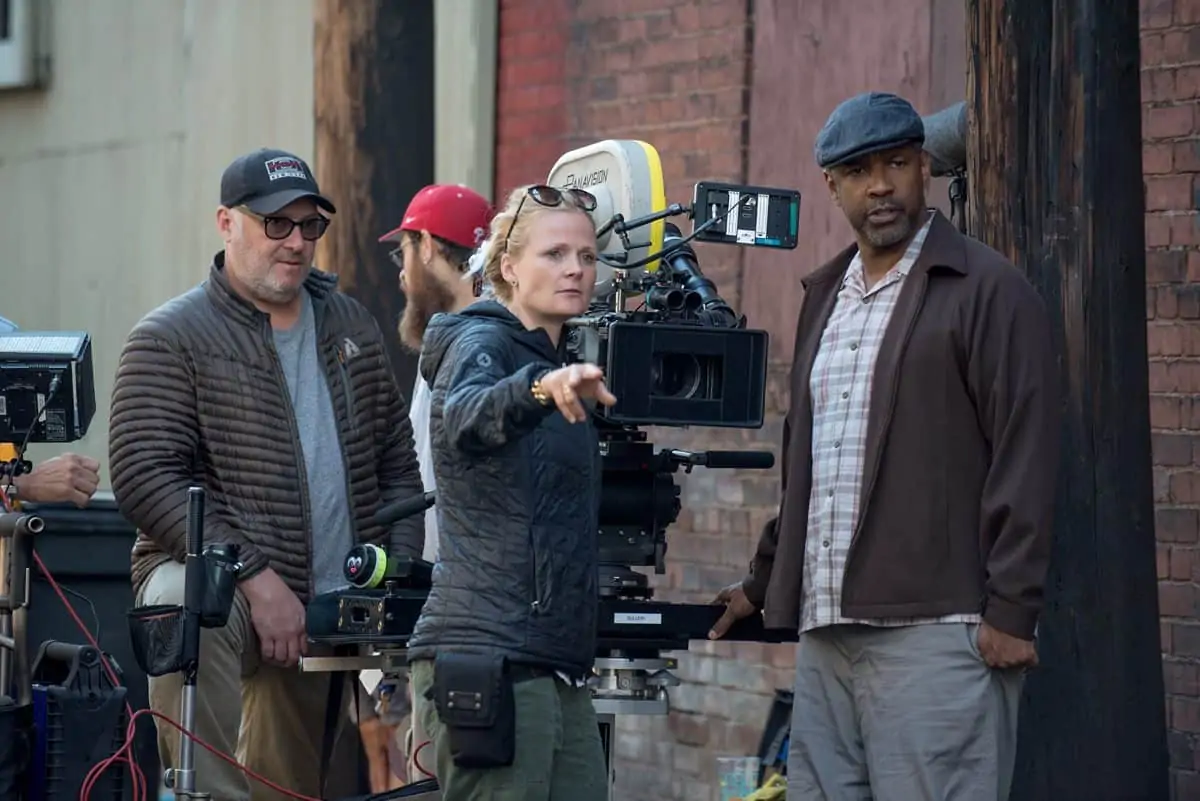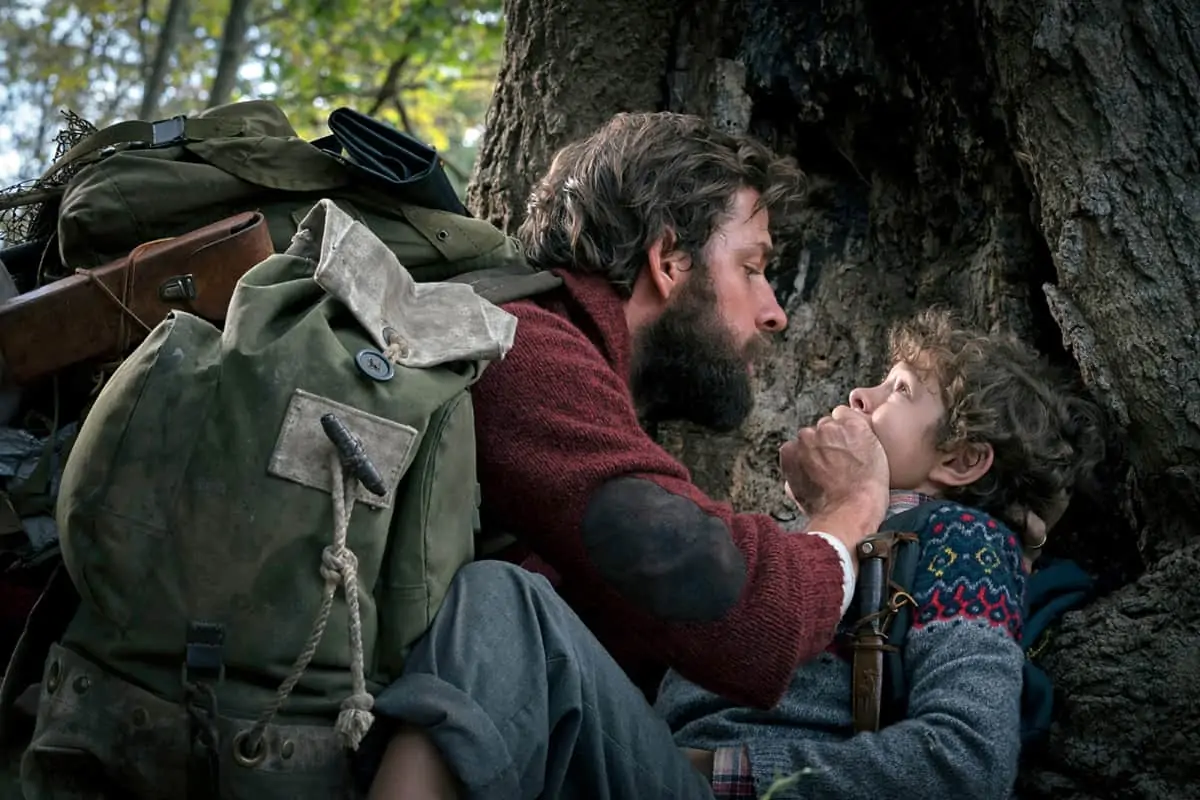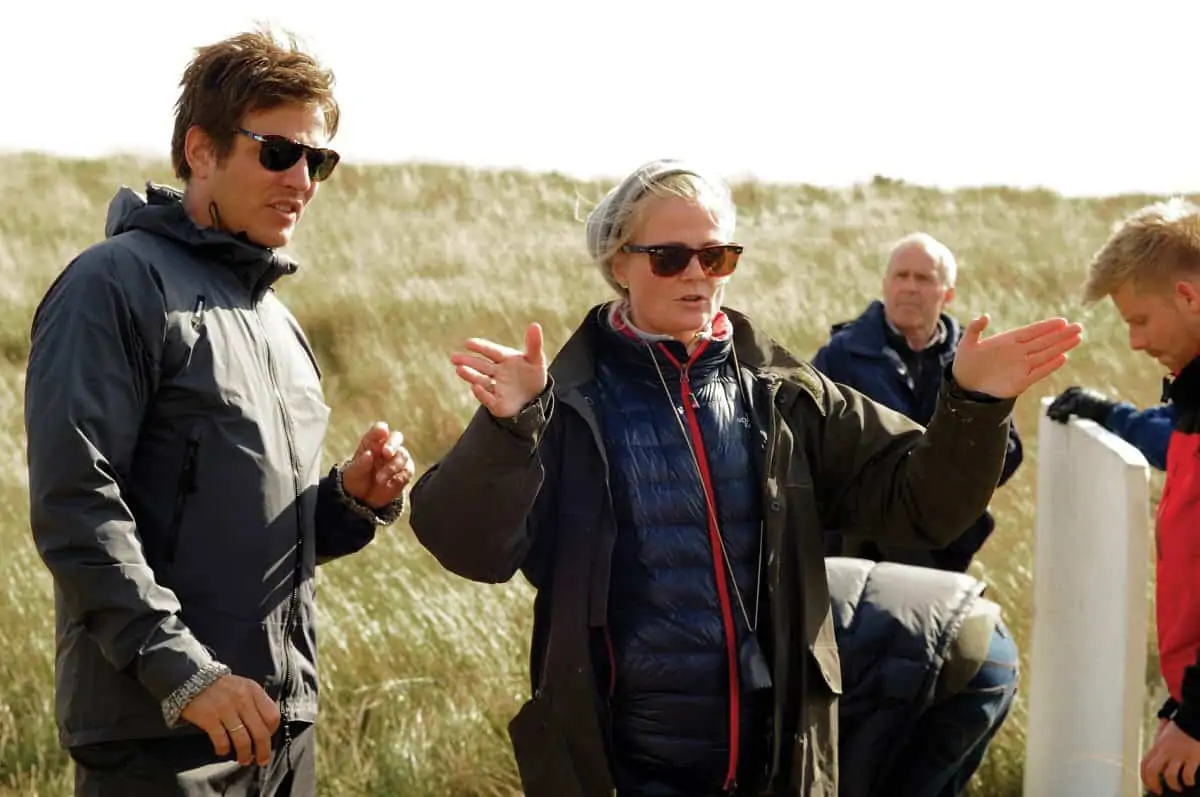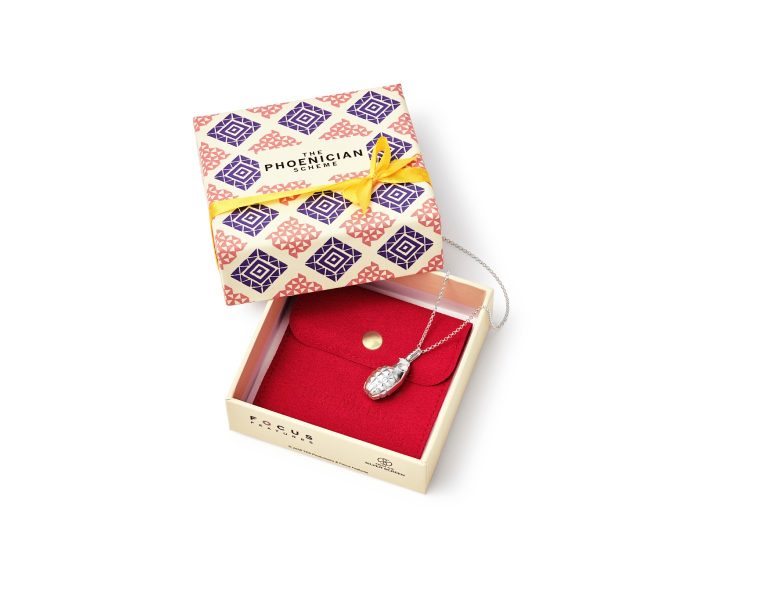SPIRITUAL JOURNEY
Delicate camera movement and a palette inspired by the early Technicolor filmmaking process tell a story of stifled desires unfolding in a colourful world almost removed from reality.
Cinematographer Charlotte Bruus Christensen ASC ventured into directorial territory for the first time when making three-part mini-series Black Narcissus – the BBC, DNA Films and FX co-production based on Rumer Godden’s 1939 novel. Set in the Himalayas, the book tells the story of a group of nuns – led by Sister Clodagh (Gemma Arterton) – who are sent to a palace in the remote mountains to set up a school. Overwhelmed by troubling memories, repressed yearnings, and the hostile environment surrounding them, the nuns are confronted by distress and desire with disastrous consequences.
“The novel is so beautifully written, detailed and emotional,” says Christensen (Far from the Madding Crowd, A Quiet Place). “When considering how I would direct and shoot the production, those internal journeys the characters go on really spoke to me. I found the concept of the nuns escaping from who they were fascinating.”
Already reimagined for the big screen in Michael Powell and Emeric Pressburger’s lush, dark 1947 film of the same name, the compelling story, Christensen believes, had much to offer a present-day audience: “Many young women are still trying to escape who they are but through different means, using social media to project who they want to be.”
Mountainscape photography was a helpful reference but it was the novel’s vivid descriptions that sparked most creative motivation. “Rumer Godden really takes you to a place with her words which I aimed to replicate. The book describes this colourful world that is almost beyond realism and at times too beautiful for the nuns to cope with. We wanted to communicate that the place is more than a picturesque landscape.”
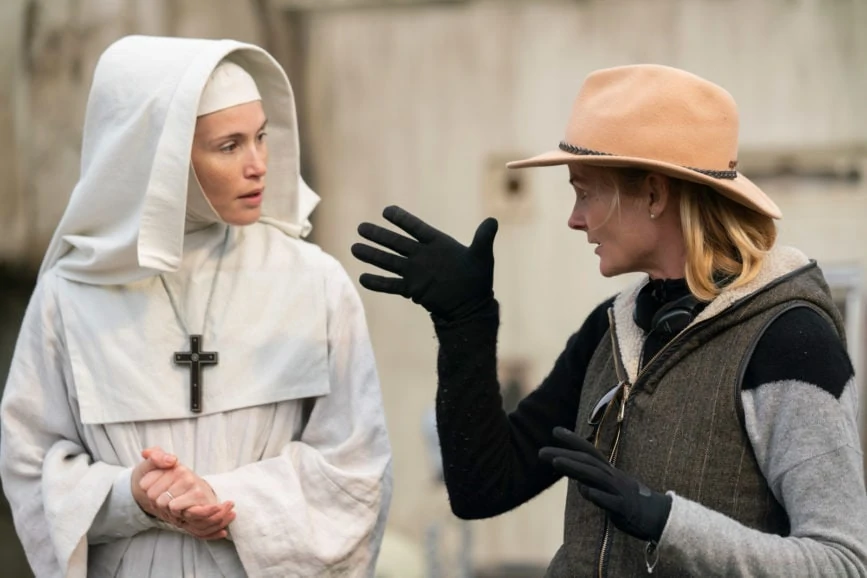
Initially, I wondered if I should avoid being inspired by the film. I then accepted that, although I could never attempt to replicate the book or film, I could interpret them in a new way and draw upon those vibrant colours.
Charlotte Bruus Christensen ASC
Cinematographer Jack Cardiff’s stunning visuals, that produced an otherworldly environment in the 1947 film, influenced some facets of the series’ visual approach. Appreciating the original production’s faithfulness to the settings described in the novel, Christensen likewise wanted to honour the world crafted through Godden’s words. “Initially, I wondered if I should avoid being inspired by the film. I then accepted that, although I could never attempt to replicate the book or film, I could interpret them in a new way and draw upon those vibrant colours.”
Christensen honoured the visual language of a selection of the 1947 film’s sequences such as the iconic scene when Sister Ruth, struggling to quell her sexual desires, applies bright red lipstick, or the high-angle shot used in the climactic bell tower scene. Instrumental in the creative process was Kave Quinn, who like Christensen, wore two hats during the creation of the series. Heading up production and costume design, Quinn explored the contrast between colour and absence of colour – particularly how best to set the white in the nuns’ clothing against the almost overwhelming Himalayan backdrop.
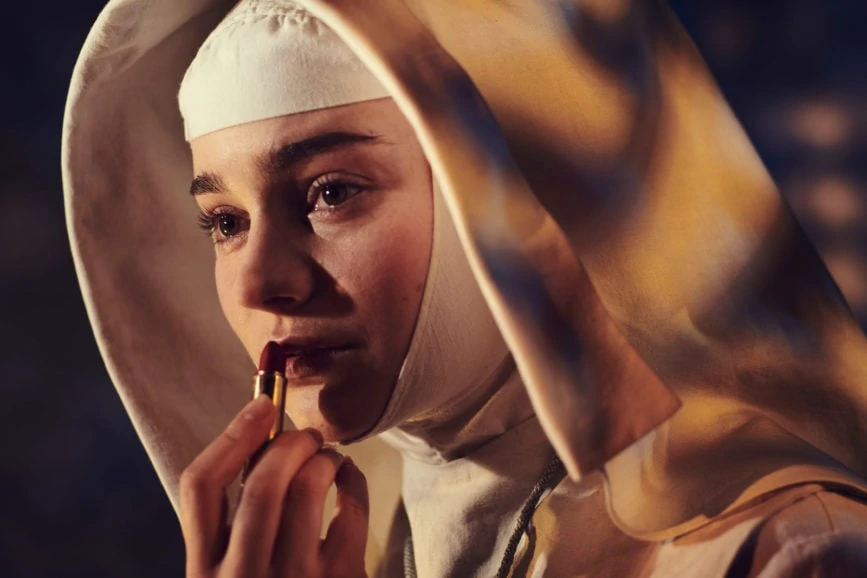
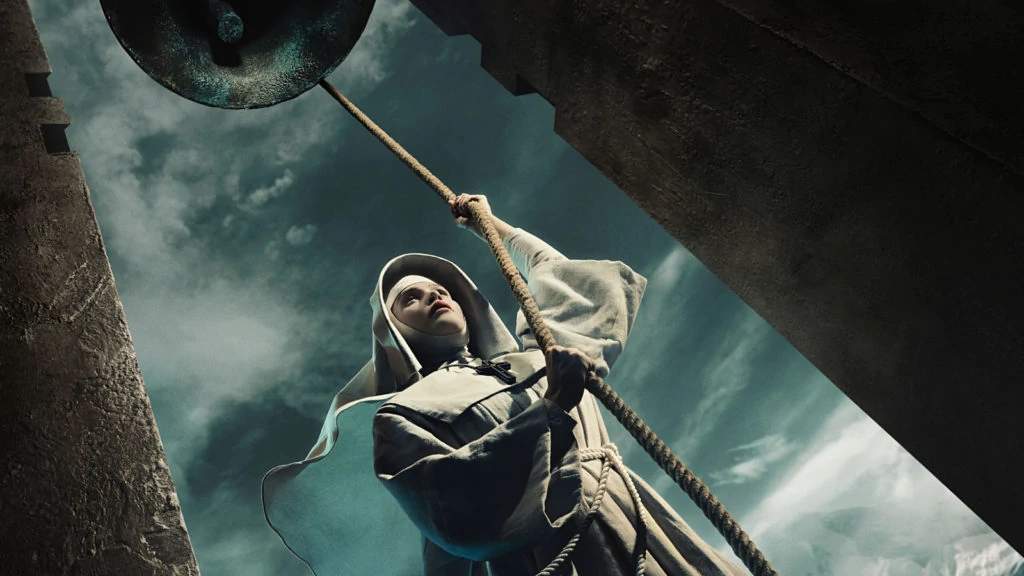
Shooting at a height of almost 4,000 feet in Jomsom, a village in the Annapurna mountains of Nepal, presented breathtaking scenery as well as complications. Two crew members suffered from altitude sickness – one receiving medical attention in hospital and the other needing to venture back down the mountain to acclimatise.
“Waking up at 3am and then navigating our way through the logistics needed to safely move the crew and equipment along the narrow roads was also a challenge. But we were greatly guided by the Nepalese production company Locations Nepal. In Nepal we didn’t have the filming package we were used to – our limited equipment mainly comprised of one small jib arm, a tripod, Steadicam, a 5Kw generator and two 1.2Kw HMI lamps which allowed us to film day for night shots.”
The palace exterior was reconstructed and shot against green screen at Bovingdon Airfield in Hertfordshire, UK. A VFX unit, headed up by Union VFX visual effects supervisors James Etherington-Sparks and Adam Gascoyne, accompanied the crew to Nepal to shoot plates that would seamlessly integrate into those scenes. Interior scenes in the palace or at the residence of Mr Dean – the British expat who stirs up repressed desires in Sister Clodagh and Sister Ruth – were filmed at Pinewood Studios.
One of the most problematic sequences to shoot – the dramatic bell tower scene, complete with the sheer drop and vast vista that make a lasting impact in the film – required a 10ft high set to be built on a stage at Pinewood. “We also needed to recreate the quality of light on top of the Himalayan mountains, in the snow, in sunlight, and at sunset. It had to be believable as a world that is almost too much for the characters – real, yet unreal – which was particularly challenging to accomplish,” says Christensen.
PURE STORYTELLING
Shooting with a combination of ARRI Alexa LF and Alexa Mini, Christensen completed the camera package with custom-made lenses from Panavision. “We had a dream of shooting 35mm, but as the budget wouldn’t allow, the lenses helped us step in that direction. Panavision’s VP of optical engineering Dan Sasaki created a stunning set of detuned spherical lenses that achieved a softness and vignetting to break up the digital sharpness and cleanness and push the lenses to capture a less perfect image.”
Classic filmmaking techniques with an emphasis on “pure storytelling” along with minimalistic and delicate camera movement were adopted to convey the feeling the characters are going on a spiritual voyage as well as a physical expedition through the hills. “When shooting their journeys from Darjeeling to Mopu, we wanted to move with them, which could be tricky because our movement was fairly restricted in the mountainous regions of Nepal. With some helicopter footage and footage captured by our rock-solid Steadicam operator, Anders Holck, who climbed those mountains walking backwards, we achieved great moving shots in a very tricky environment.
“Camera movement was very simplified overall which just felt right. This is a classic story, and it would have felt wrong choosing a handheld style, telling the story with a forced energy. Everything we did was about a classic energy,” says the DP-director.
As staying with the performances was critical, Christensen used the camera to support the characters’ experiences. “As I was also operating, when I had creative conversations with the actors about the emotions they would be feeling and where we would take a scene, I could adjust the camera movement to complement it.”
Sister Ruth is often the only person in the frame because she’s incredibly lonely. The framing and composition develop through the series and the final episode was more about letting go, so the pace was faster, and the framing choices bolder.
Charlotte Bruus Christensen ASC
A variety of options were explored to frame the key characters to support their emotional journeys and personal struggles and dilemmas, expressing topics they could not talk about and alluding to secrets that are later revealed. One scene of note sees the arrival of Mr Dean stir up repressed emotions in Sister Clodagh.
“We decided they should appear in the same frame, so we filmed more overs or shots where they are looking at each other but from far away, unless we wanted to show she was trying to pull away from him,” explains Christensen. “Sister Ruth is often the only person in the frame because she’s incredibly lonely. The framing and composition develop through the series and the final episode was more about letting go, so the pace was faster, and the framing choices bolder.”
Plans for the flashback sequences of Sister Clodagh’s life prior to joining the covenant had to change due to COVID-19. Originally planned for 2019, filming the sequences was pushed to spring 2020 for scheduling reasons, which unfortunately coincided with when the pandemic struck. “Similar to the book and film, more extended flashback scenes were planned but as that wasn’t possible, we approached them as fragments that are more frantic and based around emotions. These handheld sequences show a free-spirited young Sister Clodagh who is yet to learn self-control.”
COMMUNICATING EMOTION
Travelling to Nepal and experiencing the “extraordinary location” together created a bonded crew that felt like family. “Key grip Alex Coverley is a superb operator which was especially important to me and the style of storytelling. Operating the camera is such a collaboration with the dolly grip and taking into consideration that my time was split between camera and directing, he always delivered the practice and precision,” says Christensen.
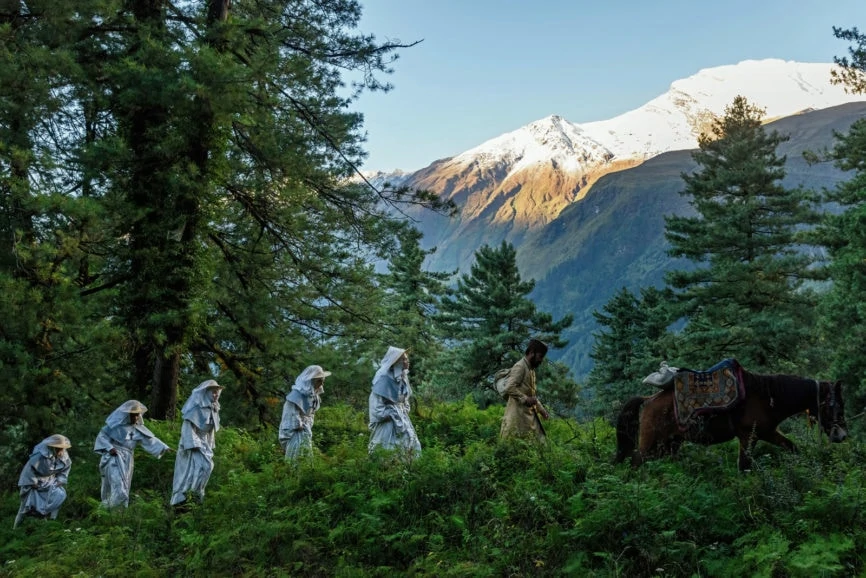
“1st AC Ashley Bond, who I’d worked with on Far from the Madding Crowd, would listen intently when I talked to the actors, so he was well prepared. He knew me and my work habits from his previous experiences of my operating, so there was a beautiful dance between Alex, Ashley, and myself. Gaffer John “Biggles” Higgins was always a massive support. It was my first time working with him, but it felt like we had made many movies together. A lot of planning was required to make three locations feel like one – The Himalayas, Bovingdon Airfield and Pinewood Studios. John Higgins was a true collaborator, and his expertise and brilliance gave me the freedom to shoot and direct.”
During this extensive pre-production, Higgins (1917, Skyfall, 1984) and Christensen decided tungsten lights would be more appropriate than LED lamps to achieve a classic feel. “As parts of the world we were creating were candle-lit, such as the night-time church interiors, we chose fixtures such as Mole Richardson lamps to create a soft tungsten glow. We also used smaller sources like par cans, spots, 650w/1Kw and Dedos for pool lighting to achieve the candlelight feeling in the nighttime palace interiors, while also creating silhouettes in the interior scenes. We also carried SkyPanels as the only LED sources as they worked brilliantly for us as an ambience source.”
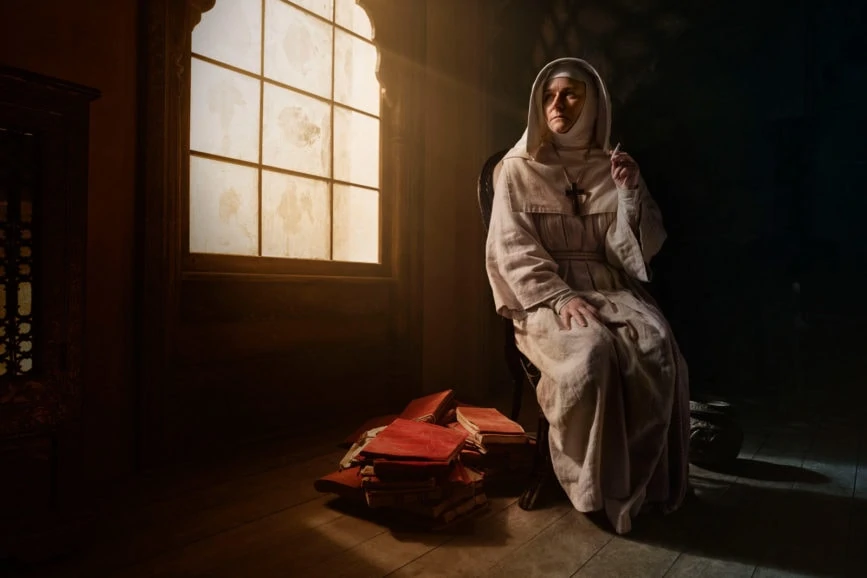
Shooting the palace day exteriors at Bovingdon Airfield was a complex task as the crew needed to be mindful of the sun’s position to ensure the shots would marry with the time of day the visual effects team captured the plates in Nepal. “Getting these shots to match and keeping track of where the sun was rising and setting required a lot of planning from John Higgins and his team,” says Christensen.
Two scissor lifts with an 18K Arrimax and a 20K Fresnel in each were used to allow the fixtures to be quickly moved around the set. A 100K SoftSun helped lift the ambience on dull days. “We liked to mix HMI and Tungsten for day exteriors. We had two LRX units on a 28m boom for the duration of the shoot at Bovingdon and six Manitou units with a 20 x 20 frame on each were used as green screen, Ultra-bounce or black for negative.”
The greens especially were treated to appear more muted but still rich and rounded. Due to the significance that red tones and glaring, fiery sunsets play in the story, we also worked to control the red hues. We added magenta in the skin tones – a colour that might normally be removed.
Charlotte Bruus Christensen ASC
Colourist Peter Doyle’s input throughout the DI process was integral. The grade needed to bring together what had been shot at Bovingdon with the plates from Nepal. “Doyle created amazing layers that built towards a saturated look. We worked with a color palette that emulated how cellulite film would capture primary colors, inspired by the old Technicolor process. The greens especially were treated to appear more muted but still rich and rounded. Due to the significance that red tones and glaring, fiery sunsets play in the story, we also worked to control the red hues. We added magenta in the skin tones – a colour that might normally be removed.”
Marking Christensen’s directorial debut, Black Narcissus saw the cinematographer instinctively adapt to the new dual role. However, she emphasises that when directing and shooting, having a close, supportive team is more essential than ever to guarantee a successful collaborative production.
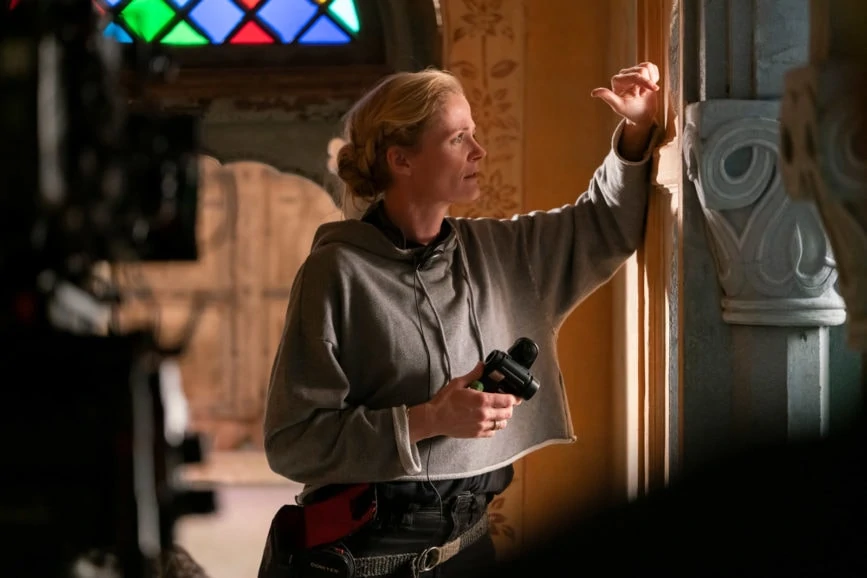
“The decision for me to shoot as well as direct wasn’t in place from the beginning, but that was how it organically evolved. Lots of great DPs I’d love to work with were put forward, but the more I thought about how I would direct, the more I knew how I would want to shoot it. I knew how I would get to the directing part if I also operated the camera. The way I communicate narrative and emotion is through moving images. When shooting, it is a much simpler way to get to the characters and react to performances,” she says.
“It would have been more difficult sitting by the monitor. Shooting is how I see things and it’s how I’ve been trained as a cinematographer. This process also taught me that directing is something I would like to do again. When I was wearing two hats, the cast had more access to the technical information and could discuss it with me during prep. They could appreciate how I was going to shoot as well as direct a scene, matching it to the emotions.”
